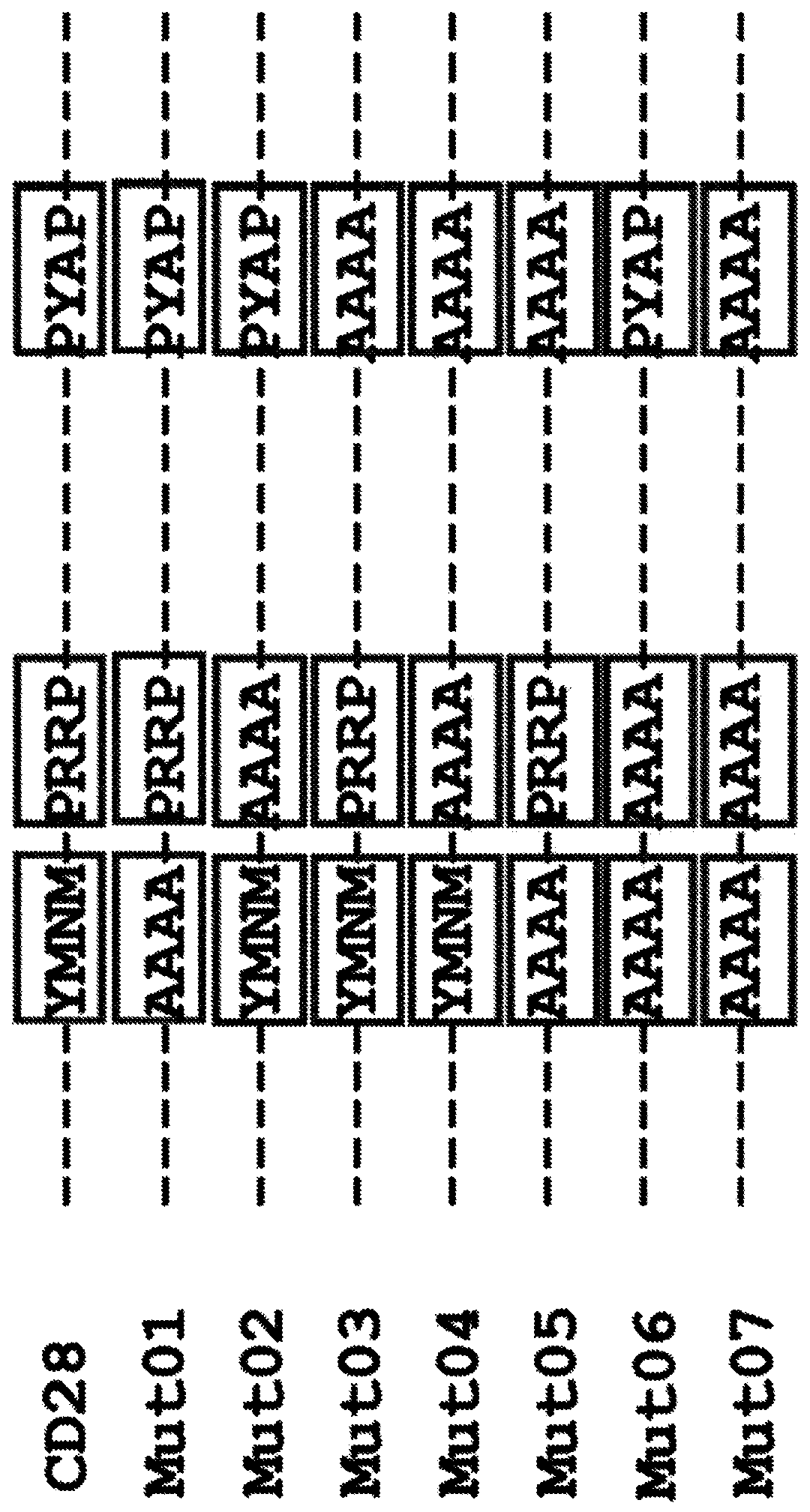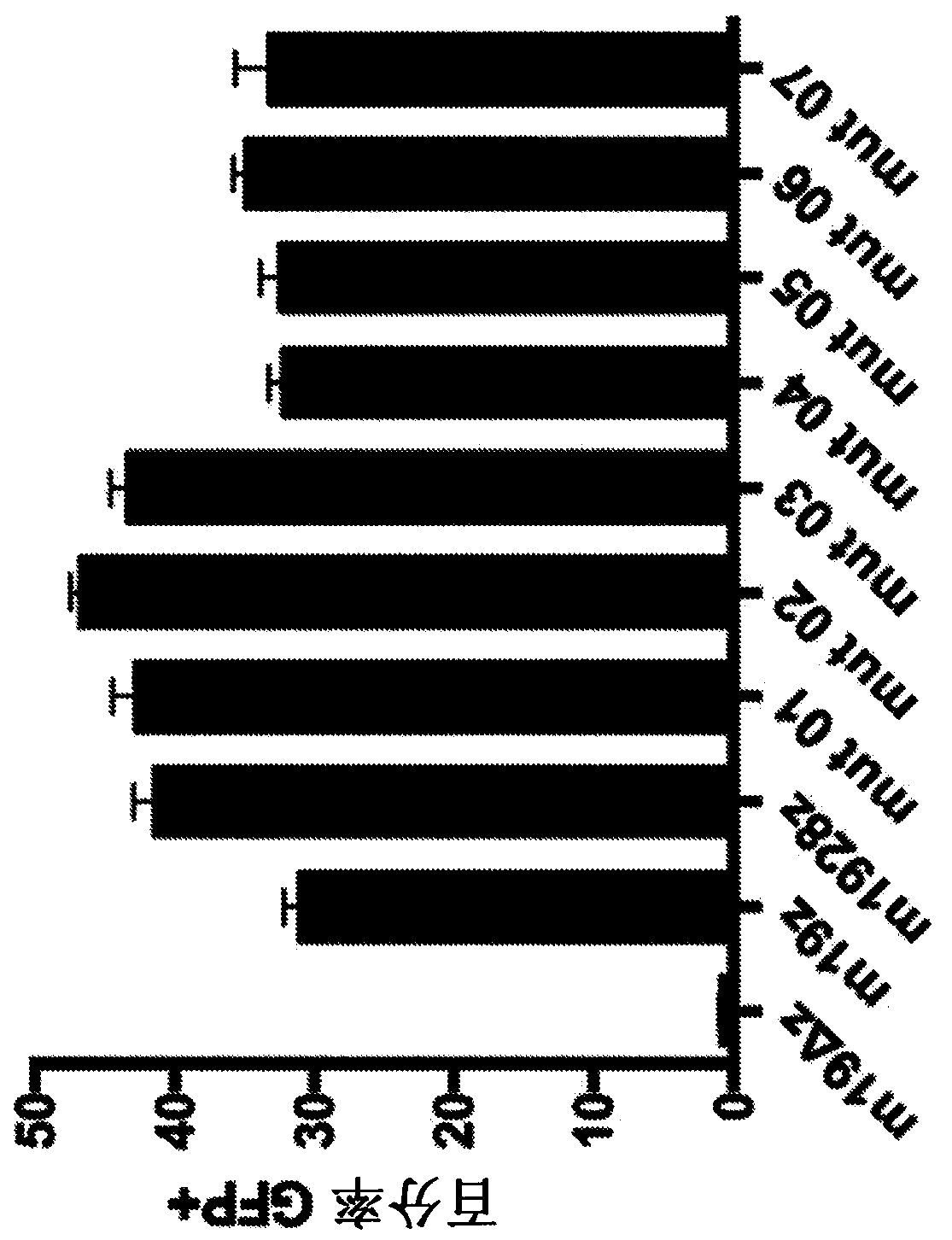Chimeric antigen receptors with mutated cd28 costimulatory domains
A technology of chimeric antigen receptors and structural domains, which can be used in the fields of antibody medical components, artificial cell constructs, and medical preparations containing active ingredients, etc., and can solve problems such as toxicity and recurrence
- Summary
- Abstract
- Description
- Claims
- Application Information
AI Technical Summary
Problems solved by technology
Method used
Image
Examples
Embodiment 1
[0181] A fully murine anti-mouse CD19 construct was developed to validate whether B-ALL is a target of CAR T cells targeting CD19 (Davila et al., 2013PLoS One 8:e61338). These include the second-generation m1928z CAR, which contains a CD28 co-stimulatory domain ( figure 1 ). The CD28 co-stimulatory domain used in CAR T cells is derived from the cytoplasmic tail of CD28, which has no intrinsic enzymatic activity but contains subdomains or motifs that regulate T cell signal transduction. The YMNM (SEQ ID NO: 1) motif is the binding site for the p85 subunit of PI3k, and CD28 co-stimulation supports PI3k activation, resulting in cell cycle progression, anti-apoptosis and cellular metabolism (Rudd and Schneider, 2003 Nat Rev Immunol 3: 544-556; Sasaki et al., 2000 Science 287:1040-1046; Wang and Rudd, 2008 Trends Cell Biol 18:486-493). Studies of mice with a mutated YMNM (SEQ ID NO: 1 ) domain abolished PI3k signaling with no other associated defects in vivo (Dodson et al., 2009)...
Embodiment 2
[0184] To further evaluate the in vitro and in vivo function of CD28-mutated CAR T cells, mouse T cells were modified with CAR and their effect on viability ( Figure 4 ) and proliferation ( Figure 5 )Impact. Secreted cytokine production was also characterized by generating CAR T cells from normal wild-type mice and incubating with 3T3-mCD19 overnight, followed by measurement of secreted cytokine levels. Compared with unmutated 1928z, the cytokine production of Mut06 CAR T cells was significantly reduced, but compared with the first-generation CAR, the production of cytokines was significantly increased ( Figures 6A to 6D ). Target cytotoxicity was also characterized by generating CAR T cells from normal wild-type mice and incubating with 3T3-mCD19, and measuring the killing effect of RTCA on target cells within 1 week. CD28-mutated CAR T cells were killed as well as non-mutated CAR T cells, and at low E:T ratios, the killing effect of mut06 was better ( Figure 7A and ...
PUM
 Login to View More
Login to View More Abstract
Description
Claims
Application Information
 Login to View More
Login to View More - R&D
- Intellectual Property
- Life Sciences
- Materials
- Tech Scout
- Unparalleled Data Quality
- Higher Quality Content
- 60% Fewer Hallucinations
Browse by: Latest US Patents, China's latest patents, Technical Efficacy Thesaurus, Application Domain, Technology Topic, Popular Technical Reports.
© 2025 PatSnap. All rights reserved.Legal|Privacy policy|Modern Slavery Act Transparency Statement|Sitemap|About US| Contact US: help@patsnap.com



